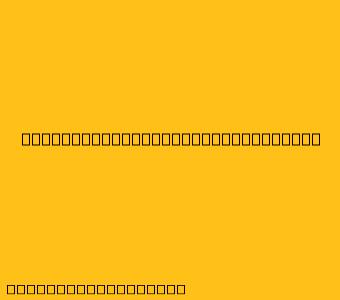Sample Letter in English: A Comprehensive Guide
This article will provide you with a comprehensive guide on writing a sample letter in English. We will cover the essential components, formatting, and different types of letters.
Understanding the Basics of a Letter
A letter is a written message sent from one person or entity to another. It serves as a formal means of communication, conveying information, requests, or opinions.
Key Components of a Letter:
- Heading: The sender's address and date are included in the heading.
- Inside Address: This section contains the recipient's name, title, and address.
- Salutation: The greeting used to address the recipient, often starting with "Dear" followed by the recipient's name or title.
- Body: The main content of the letter, containing the message or information.
- Closing: A polite phrase concluding the letter, such as "Sincerely" or "Best regards."
- Signature: The sender's handwritten name below the closing.
- Enclosures: If any additional documents are included with the letter, they are listed here.
Sample Letter Format
Formal Letter:
[Your Name] [Your Address] [Your Phone Number] [Your Email Address]
[Date]
[Recipient Name] [Recipient Title] [Recipient Address]
Dear [Recipient Name],
[Body of the Letter]
Sincerely,
[Your Name]
Informal Letter:
[Your Name] [Your Address] [Your Phone Number] [Your Email Address]
[Date]
Dear [Recipient Name],
[Body of the Letter]
Best regards,
[Your Name]
Different Types of Letters
1. Business Letters:
- Cover Letters: Accompany resumes, introducing yourself and highlighting relevant qualifications.
- Order Letters: Placed to purchase goods or services.
- Complaint Letters: Express dissatisfaction with a product or service.
- Inquiry Letters: Requesting information or clarification.
- Confirmation Letters: Confirming details of an agreement or meeting.
2. Personal Letters:
- Thank You Letters: Expressing gratitude for a gift, favor, or hospitality.
- Condolence Letters: Offering sympathy to someone experiencing grief.
- Invitation Letters: Inviting someone to an event.
- Reference Letters: Providing a positive testimonial for someone.
3. Other Types of Letters:
- Resignation Letters: Formal notification of leaving a job.
- Recommendation Letters: Suggesting a person for a specific opportunity.
- Application Letters: Applying for a job, scholarship, or program.
Tips for Writing Effective Letters
- Be clear and concise: Use short sentences and paragraphs to convey your message effectively.
- Maintain a professional tone: Use formal language and avoid slang or jargon.
- Proofread carefully: Ensure your letter is free of spelling and grammar errors.
- Choose the appropriate format: Use a formal format for business letters and a more informal one for personal letters.
- Address the recipient correctly: Double-check names and titles.
- Be polite and respectful: Use appropriate salutations and closing phrases.
- Consider your purpose: Tailor your letter to achieve your desired outcome.
Remember: Always adapt the content and format of your letter to suit the specific purpose and audience.
